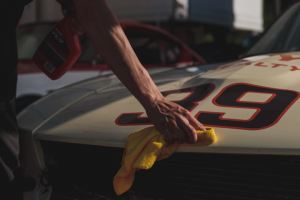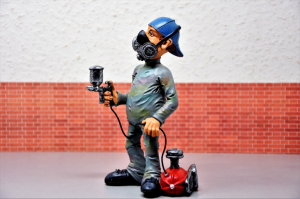Car scratches are inevitable. It doesn’t matter how much care you give your car. Depending on the force of impact, car scuffs may be superficial or deep. All in all, car abrasions are pretty much annoying. They need to be fixed as soon as possible. If your car gets a graze, you don’t have to worry as it can be easily fixed. Well, without further ado, let’s go through the steps required in the repair of a car laceration.

Examine the car scuff
This is the first step. Examining the scuff will help you determine if it’s superficial or deep. Once you’ve determined what layers of your car have been affected, you can proceed with the appropriate methods of repair. How will you know if it’s a superficial car scrape or a deep one? You need to know the layers of a car. The following are the layers of a car from the outside to the inside.
- Clear coat
- Base coat
- Primer
- Steel
The base coat is also called the color coat. The primer layer not only protects the steel, but also helps in adherence of paint to the surface. The following are the types of scratches.
Small/light car abrasions
- They affect the outermost layer.
- They are easy to repair.
Big/deep car abrasions
- They affect the layers deeper into the clear coat.
- They cause serious damage.
- They aren’t as easy to repair as the light scrapings.
How to fix small car grazes
Start by thoroughly cleaning the surface of your car and remove any debris or small objects. After that, cover the areas around the abrasion with masking tape. Once you are done with that, put a small polishing compound to a microfiber cloth and polish the laceration. Finally, dry the area with a terry cloth or a microfiber cloth.
How to fix big car grazes
Removal of gashes can be tricky at times. However, any scratch through the clear coat can be removed by a scratch remover. The problem currently, is that fake or poor quality scratch removal products are flooding the market. Therefore, The best deep scratch remover reviews might help you decide which products to use. Once you succeed in finding the right product, you can proceed with the following steps of fixing a gash.

- Buy paint – Ensure you buy matching paint. If you are unable to find it, get in touch with your car dealer.
- Clean the surface of your car – Wash your car thoroughly and dry it properly. As you do this, concentrate on the damaged areas. Thorough cleaning also involves getting rid of debris that may result in more damage as you fix a car scuff.
- Sand the damaged area – Use 1500-grit sandpaper to sand the affected area. You should ensure that you sand through the clear coat only. Furthermore, ensure that you sand towards only one direction. Use clean water to periodically rinse the area so that you clearly see the areas you sand. After that, dry the surface with a microfiber cloth.
- Masking tape and primer come in handy – Cover the area around the scuff with masking tape. This will ensure the primer gets nowhere else but to the laceration. After that, apply a thin primer to the scratched area and allow it to dry off.
- Painting – Start by mixing the paint. After that, apply it on the grazed surface from the border inwards. Use a small tissue to absorb the excess paint. After painting, you will have to wait for several days for the paint to dry.
- Polishing – Polish the whole of your car to ensure that the paint you applied blends in. The polish on this 1947 Mercury Coupe is amazing.
This article has discussed the ways in which you can fix both big and small car abrasions. It has also highlighted some of the basic knowledge in fixing a car scrape, for instance, the layers of a car wall. With this information, you can now determine whether a laceration is superficial or deep. As if that is not all, you can now fix any car abrasion following the steps above. You can eventually save on the cash you would have used in hiring a mechanic to fix your car. Isn’t that awesome?










